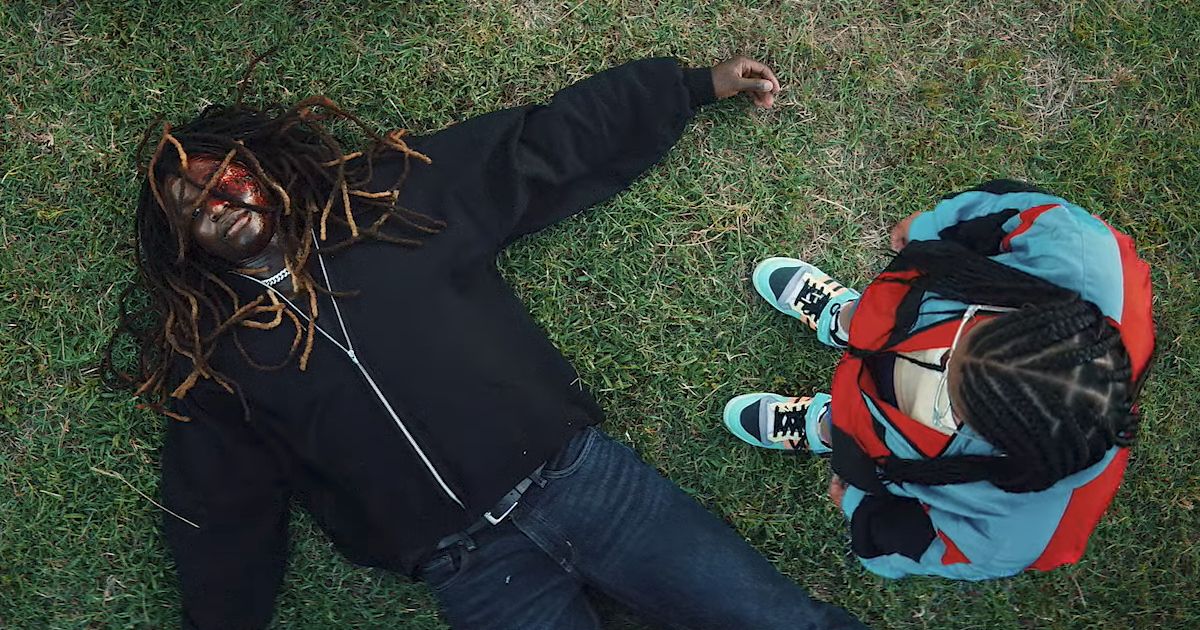Lisa Frankenstein Failed Us - Now What?

Lisa Frankenstein had a lot going for it. When the film hit theaters in Feburary of last year, we got to see Cole Sprouse in a leading role, eighties fashion, and gore galore. Critics said it left much to be desired, and that the movie lacked direction. But what’s missing from adaptations like this cinematic fumble is actually what makes Shelley’s 1818 novel so iconic.
Victor Frankenstein’s creation is not a mindless animated corpse, as much as we love to see a groaning hottie stumble across the silver screen. In the novel, he is a being with intelligence and compassion. When we look at Frankenstien as the story of a kind and educated individual who is vilified because of his appearance, the connection between Shelley’s work and the Black experience becomes clear.
Writers and filmmakers have the power to use this connection in a positive way. They can foster an environment of healing where audiences and creators can process the hardships of experiencing life in a Black body on the big screen. But too many adaptations either come up short or don’t get made at all.
The Frankenstein story is about so much more than reanimating a corpse. It’s about coming to terms with an image the world projects onto you and deciding how to respond. In the novel, the creature gives into the negative perceptions and becomes the monster that the world expects him to be.
But what if he were to resist the narrative imposed upon him? What if instead of chasing his creator to the ends of the earth in a rampage of vengeance, he decided to focus on his own wellness and personal growth?
Literary theorists have a long history of visualizing the creature as a marginalized identity; Sandra Gilbert and Susan Gubar famously connected the creature to the female experience in “Horror’s Twin: Mary Shelley’s Monstrous Eve”. Even the New York Times made a connection between the novel and a personification of the creature as a Black man.
But I say we should actually write the story instead of theorizing about it; let’s bring academia out of its ivory tower and make these theories accessible to those who enjoy the story. What is the point of making these claims if they have no real impact beyond a collegiate English literature course?

The film The Angry Black Girl and her Monster makes the connection between Shelley’s work and the Black experience but fails to characterize Frankenstein's creation with the emotional depth the story deserves. A review of the film by The New York Times claims that the portrayal of a “freakish Black man” makes it “difficult to challenge the character’s monstrousness”.
I agree that depicting a one-dimensional zombie falls short of examining a central aspect of the Black experience. In the early chapters of the novel, Frankenstein's creature is kind and gentle, but is perceived as a threat. Black men and women alike go through life being judged for their physical presence, their individuality invalidated based on racial stigma and bias. The creature as an intelligent and caring soul is fundamentally comparable to the Black experience. We know what it is like to be feared simply for existing, for being born into a body that is classified as a threat. As noted by Variety Magazine, what is missing from The Angry Black Girl and Her Monster is that “the creature never actually becomes a character” - and this is a missed opportunity.
![Escaping Mr. Rochester [Book]](https://www.lovingmebooks.com/uploads/6/4/8/3/64831673/s510214197831630811_p76027_i2_w970.png?width=640)
But some writers re-envisioning other classing works are showing us how it could be done.
L.L. McKinney’s Escaping Mr. Rochester is a novel that reimages Charlotte Bronte’s classic Jane Eyre – this time with a focus on the silenced character Bertha Mason. Depicted as a Black woman in this retelling, Bertha is given the chance to speak her own truth. (And the husband who locks his wife in the attic is held accountable for his abuse.) The novel’s dedication reads, “to the Black girls determined to live how they want and love who they want, you are the blueprint.” This publication demonstrates a desire for stories that examine themes already present in a classic text and apply them to the Black experience. Frankenstein deserves the same careful examination and adaptation that McKinney so expertly gives to Jane Eyre.
The novels that make up our national literary heritage, like Frankenstein and Jane Eyre, are the stories that we teach to our children in schools. I am not advocating that these novels be replaced by new versions, or that we stop teaching classic literature to our children. But the beauty of these stories, the reason we return to them again and again, is that there is something universal about their content. Transforming the narrative to include the Black experience is a healing exercise, one that lets us make the claim that our stories also deserve to be told, and to be read.
The cultural fascination with Frankenstein is not going away. The world needs a Frankenstein adaptation that is both true to text and evocative. By emphasizing the creature’s humanity, and the rejection that turns him into a monster, popular media can provide insight into a world where no amount of assimilation ever seems to be enough - the world Black men and women live in every day.


Comments
Post a Comment